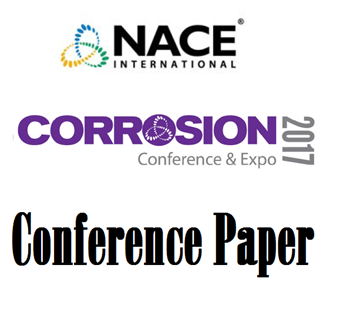Search
Products tagged with 'hydrogen sulfide'
View as
Sort by
Display
per page
Corrosion Control of Acid Flare Lines at Gas Treatment Facility
Product Number:
MPWT19-15242
Publication Date:
2019
$0.00
Corrosion Investigation Of Five Stainless Steels In Oil-Gas-Water Multiphase Flow Containing H2S, CO2 And Chloride
Product Number:
51322-18121-SG
Publication Date:
2022
$20.00
Corrosion Management Review of Sour Gas Pipeline – A Case Study
Product Number:
51323-18855-SG
Publication Date:
2023
$20.00
Corrosion Testing of PM HIPed UNS N06625 and PM HIPed UNS R56400 in Geothermal Environment at Hellisheidi Site
Product Number:
51321-16708-SG
Publication Date:
2021
$20.00
Developing Additively Manufactured Alloy UNS N07718 for Critical Oilfield Applications
Product Number:
51323-19220-SG
Publication Date:
2023
$20.00
Development Of Fes Scale Control Technology Using Polymeric Dispersants In Sour Environment
Product Number:
51322-17630-SG
Publication Date:
2022
$20.00
Development of Optimal Hydrogen Sulfide Scavengers for Oilfield Applications
Product Number:
51323-19563-SG
Publication Date:
2023
$20.00
Development Of The NACE “MR-01-75” And NACE “TM-01-77” Standards: Part I – Field Observations And Metallurgical Factors
Product Number:
51322-17525-SG
Publication Date:
2022
$20.00
Development Of The NACE “MR-01-75” And NACE “TM-01-77” Standards: Part II – Accelerated Material Qualification Testing In Sour Environments At Near Atmospheric Pressure
Product Number:
51322-17516-SG
Publication Date:
2022
$20.00
Effect of Carbon Dioxide and Hydrogen Sulfide on the Localized Corrosion Susceptibility of Corrosion
Product Number:
51317--8933-SG
ISBN:
8933 2017 CP
Publication Date:
2017
$20.00
Effect of the Substitution of Ni by N and Mn in Lean Duplex Stainless Steels on SCC Assisted by H2S
Product Number:
51317--8943-SG
ISBN:
8943 2017 CP
Publication Date:
2017
$20.00
Effect of Trace Concentrations of H2S Introduced to Existing Sweet Corrosion Product Layers
Product Number:
51323-19261-SG
Publication Date:
2023
$20.00












